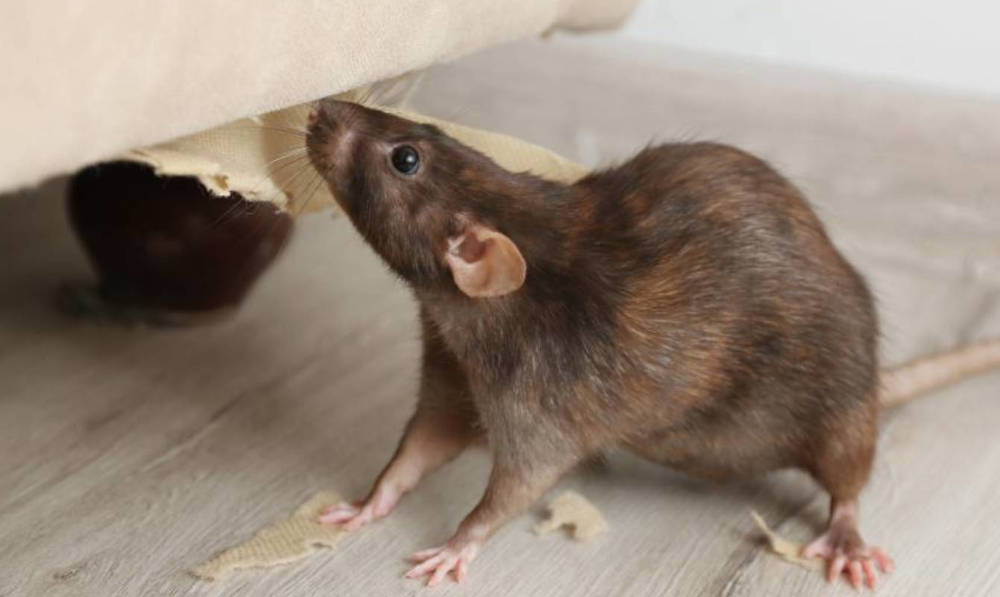KEY TAKEAWAYS:
Identify and Seal Entry Points: Inspect your home thoroughly to identify any potential entry points for rats, and seal them using materials that rats cannot chew through, such as steel wool or metal sheeting.
Remove Food Sources: Keep your home and yard clean and tidy to eliminate food sources that attract rats. Store food in airtight containers, promptly clean up spills, and secure outdoor garbage cans.
Employ a Multi-Pronged Approach: Use a combination of traps, rodenticides, and preventive measures to effectively control rat populations both inside and outside your home. Choose the methods that suit your situation best, and follow safety precautions when using chemicals.
Maintain Cleanliness: Regularly clean and declutter your home, paying special attention to areas where rats are likely to hide. A clean environment makes your home less appealing to rats and reduces the risk of infestation.
Consider Professional Help: If your efforts to control rats are not successful, don’t hesitate to seek professional pest control services. They have the expertise and tools to assess your situation and implement effective strategies to eliminate rat infestations.
Rats are not just a nuisance; they can pose serious health risks and cause significant damage to your property.
Whether they’re scurrying around in your attic, nesting in your garden, or even making appearances in your kitchen, it’s essential to take swift action to eliminate them.
Here’s a comprehensive guide on how to get rid of rats both inside and outside of your home.
Inside Your Home
1. Identify Entry Points
The first step in rat control is to identify how they’re entering your home. Check for holes or gaps in walls, floors, and foundations. Rats can fit through surprisingly small spaces, so be thorough in your inspection.
2. Seal Entry Points
Once you’ve identified entry points, seal them off with materials like steel wool, metal sheeting, or concrete. Make sure to use materials that rats can’t chew through.
3. Remove Food Sources
Rats are attracted to food, so keeping your kitchen clean and food securely stored is crucial. Ensure that all food is stored in airtight containers, and promptly clean up any spills or crumbs.
4. Set Traps
Traps are an effective way to catch rats already inside your home. Place them along walls and in areas where you’ve noticed rat activity. Consider using different types of traps, such as snap traps, electronic traps, or humane traps, depending on your preference.
5. Use Rodenticides
If the infestation is severe, you may need to use rodenticides. Be cautious when using these chemicals, especially if you have pets or small children. Follow the instructions carefully and place the bait in areas inaccessible to pets and children.
6. Regularly Clean and Declutter
Rats are attracted to cluttered and dirty environments. Regularly clean your home, paying special attention to areas where rats are likely to hide, such as basements, attics, and storage areas.
7. Seek Professional Help
If you’re dealing with a persistent rat problem that you can’t seem to solve on your own, it may be time to call in professional pest control services. They have the expertise and tools to effectively eliminate rat infestations.
Outside Your Home
1. Remove Outdoor Food Sources
Rats are drawn to outdoor areas where food is readily available. Keep garbage cans tightly sealed, pick up fallen fruit from trees, and avoid leaving pet food outside for extended periods.
2. Trim Vegetation
Rats often use overgrown vegetation as hiding spots and pathways. Keep your lawn and garden well-trimmed to eliminate potential hiding spots.
3. Secure Compost Bins
Compost bins are a potential food source for rats. Make sure your compost bin is tightly sealed and placed away from your home to deter rats from nesting nearby.
4. Remove Shelter Options
Rats seek shelter in outdoor structures such as sheds, woodpiles, and overgrown bushes. Keep these areas tidy and free of clutter to discourage rats from taking up residence.
5. Use Rat-Repellent Plants
Certain plants, such as mint, lavender, and marigolds, are known to repel rats due to their strong odors. Planting these around your home can help deter rats from coming too close.
6. Install Rat-Proof Fencing
If you have a persistent rat problem in your yard, consider installing rat-proof fencing around the perimeter of your property. Use materials like hardware cloth or concrete to prevent rats from burrowing underneath.
7. Employ Traps and Rodenticides
Similar to indoor rat control, traps and rodenticides can be effective in eliminating rats from your outdoor space. Place traps along fences and in areas where you’ve noticed rat activity, and use rodenticides as a last resort, following the instructions carefully.
8. Professional Assistance
If your efforts to control rats outside your home aren’t effective, consider seeking professional help. Pest control experts can assess your property and implement effective strategies to eradicate the rat infestation.
Summary
Dealing with a rat infestation can be a challenging and unpleasant experience, but with the right approach, you can effectively eliminate rats from both inside and outside your home.
By identifying entry points, removing food sources, employing traps and rodenticides, and maintaining a clean and clutter-free environment, you can significantly reduce the likelihood of a rat infestation.
If you find yourself overwhelmed, don’t hesitate to seek professional assistance to ensure your home remains rat-free.

